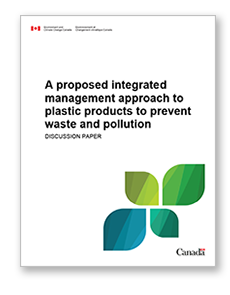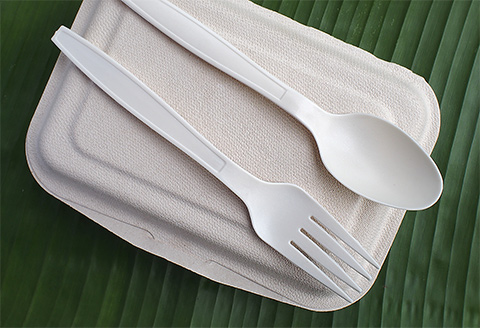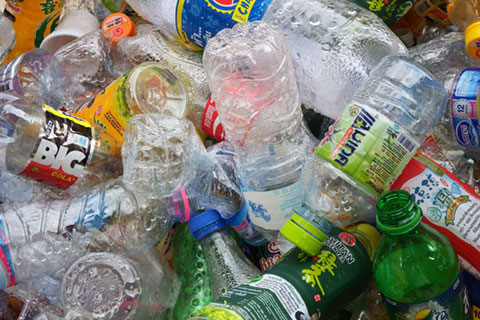Canada announced its commitment to ban a list of non-reusable plastic products by 2022. Restaurants, grocers, and other businesses will need to quickly find a viable solution to replace single-use plastics. We take a look at bioplastics and see if it’s a good alternative.
 In August 2020, Dalhousie University reported that 70% of Canadians support a ban on single-use plastics. As per CTV News’ October 7th, 2020 article Canada announced its commitment to ban a list of non-reusable plastic products by 2022. In place of single-use plastic cutlery and plastic food packaging, restaurants and grocers will need to find a viable solution to replace single-use plastics. The Government of Canada has placed guidance in their discussion paper on an integrated management approach to plastic products by using bioplastics as an innovative, sustainable alternative to single-use plastics.
In August 2020, Dalhousie University reported that 70% of Canadians support a ban on single-use plastics. As per CTV News’ October 7th, 2020 article Canada announced its commitment to ban a list of non-reusable plastic products by 2022. In place of single-use plastic cutlery and plastic food packaging, restaurants and grocers will need to find a viable solution to replace single-use plastics. The Government of Canada has placed guidance in their discussion paper on an integrated management approach to plastic products by using bioplastics as an innovative, sustainable alternative to single-use plastics.
What is bioplastics? Bioplastics originate from the renewable plant biomass source, rather than the non-renewable raw petrochemicals source. Journalist Anja Krieger notes that most traditional plastics can be reproduced with the biomass yielding the exact same chemical composition.
The appeal of bioplastics is that they can be composted in commercial facilities, which limits the amount of waste that is sent to the landfill. Under specific conditions of proper sun and oxygen exposure, they are 100% biodegradable. For these reasons, the use of bioplastics is said to have less of an impact on climate change overall, compared to single-use plastics.
UN Research shows that, in comparison to traditional plastics, bioplastics are equal in durability and versatility. They do not change the flavour or scent of the food they carry. The user experience is unchanged in the switch from traditional plastics to bioplastics.

How green is bioplastics? Although using bioplastics as an alternative to traditional plastics sounds appealing, it may be too good to be true as they have more of an environmental impact than most companies claim. Bioplastics still have a large carbon footprint. They are often made from derivatives of corn matter or palm oil which are responsible for greenhouse gas emissions and global mass deforestation, according to the International Conservation of Nature. As such they contribute to both climate change and a decrease in biodiversity. Christoph Lauwigi from Friends of the Earth Germany worries that an increase in production of these crops raises arable land pressure that can lead to water shortage and a loss of biodiversity.
Another problem with bioplastics is in how they are used and disposed of by consumers. According to British MPs most bioplastics require industrial composting facilities to break down, which are often difficult to access. Even when they reach those facilities, the breakdown process requires water, energy, and heavy chemicals. Once bioplastics are accidentally added to traditional plastic recycling they contaminate the recycling stream, leading to more plastics in the landfill. Bioplastics are also frowned-upon, as they perpetuate single-use consumption, rather than encourage the use of reusables.
How should businesses respond? To fully integrate bioplastics or any other sustainable alternatives into the market, businesses must band together to advocate for the need for proper collection methods and processes. Simply complying with government regulations is not good enough and may only continue to accelerate the rates of climate change we are facing today.

To find a sustainable alternative to single-use plastics, governments must not rush to act on implementing alternatives. Studies must be conducted to examine possible solutions for their environmental impact and must be supported economically and socially by the population for proper use and proper disposal. However, as global citizens, taking action today starts with permanently reducing our consumption of single-use plastics and other single-use materials, to allow governments more time to study the alternatives.

The supermarkets are also full of clear clamshell containers containing berries, tomatoes, baked goods and single portion lunches. It annoys the heck out of me that these things are never mentioned to be banned, and plastic bags and plastic utensils have been given the dirty eye. Then there’s the whole plastic “bottle” saga, containing from water to orange juice to laundry detergent We have a long way to go before eradicating the plastic from our food chain.
the oil industry is banking on plastics as transportation fades
in that battle i’m betting on oil
i know people who treat a lot of containers like reusable gas cans
over and over
carry a spoon ,
learn how to drink without a straw
use your own recyclable cup
grocery bags are wastepaper basket liners
go back to tin and glass
return harware to the bins
wrap stuff in paper
[…] co-founders want to see more government incentives for businesses to find ways to innovate with reusable packaging solutions. It takes extensive time and money to create such solutions and they believe it would be great to […]
[…] co-founders want to see more government incentives for businesses to find ways to innovate with reusable packaging solutions. It takes extensive time and money to create such solutions and they believe it would be great to […]